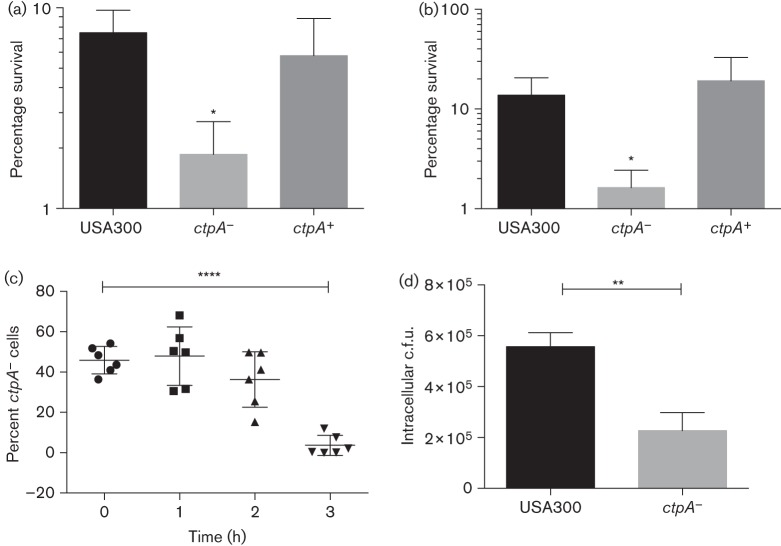Fig. 4.
CtpA is required for stress tolerance and during interaction with the human immune system. (a) The wild-type, ctpA− and ctpA+ strains were grown in TSB at 37 °C and subsequently transferred to 55 °C for 15 min. Bacterial counts (c.f.u. ml−1) were calculated before and after incubation and the number of surviving bacteria is expressed as a percentage of the inocula. Data shown are the mean of three independent replicates, with error bars representing ±sd. (b) WT, ctpA− and ctpA+ strains were incubated in human serum for 1 h and the number of bacteria (c.f.u. ml−1) was calculated before and after incubation. The percentage survival of each strain is shown. Data are the mean of three independent replicates, with error bars representing ±sd. (c) Aliquots of whole human blood were inoculated with equal quantities of the WT and ctpA− mutant strains. Samples were incubated at 37 °C and the relative proportion of ctpA− mutant cells in each was determined over time by serial dilution and replicate plating on TSA and TSA containing erythromycin. Individual data as well as mean and sd are indicated for each time point. (d) THP-1 human derived macrophages were infected with the WT and ctpA− mutant strains. Twenty-four hours post-infection the number of surviving intracellular bacteria was enumerated. Data shown are the mean of three independent replicates. Statistical significance was determined for all experiments using Student’s t-test: *P≤0.05, **P≤0.01, ****P≤0.0001.

